Meet the LGBTQ travel guru who conquered the gaybourhoods of Burning Man
Meg Ten Eyck recalls making eye contact across the world’s largest queer women’s play party at Burning Man - here's what happened next!
By Meg Ten Eyck
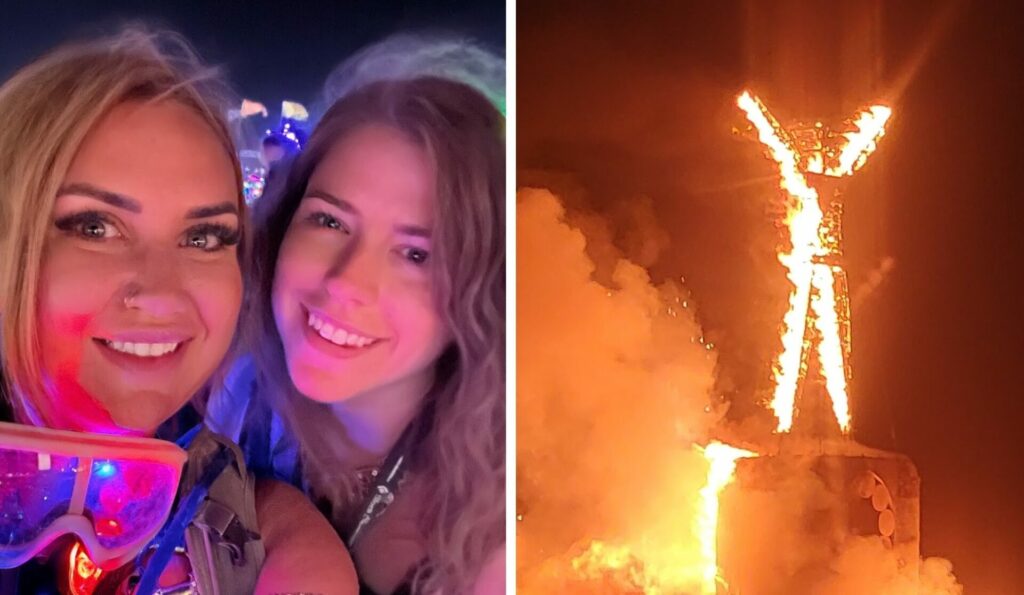
The biggest lesson I learned at Burning Man was the result of accidentally making eye contact from across an orgy.
Let’s back up. Hi, I’m Meg. [And she’s leading the Travel category in Attitude 101, empowered by Bentley, our list of 101 influential LGBTQs – ed]. I explored the world for 10 years before launching EveryQueer, a website prioritising the travel experiences of queer women, transgender and nonbinary people. I’m a traveller who reviews posh resorts for work and has a taste for butler service. So how did I end up in the desert, sleeping on the ground, with no electricity, phone service or running water — all while pissing in a bucket?
The one thing I’m good at is discovering and developing spaces around the world where queer women are flourishing. When I was gifted the opportunity to attend Burning Man for the very first time by a client of mine, I knew I had to say yes. I had six weeks to find a camp, organise transport, procure supplies, and to ship a bicycle 3,500 miles.
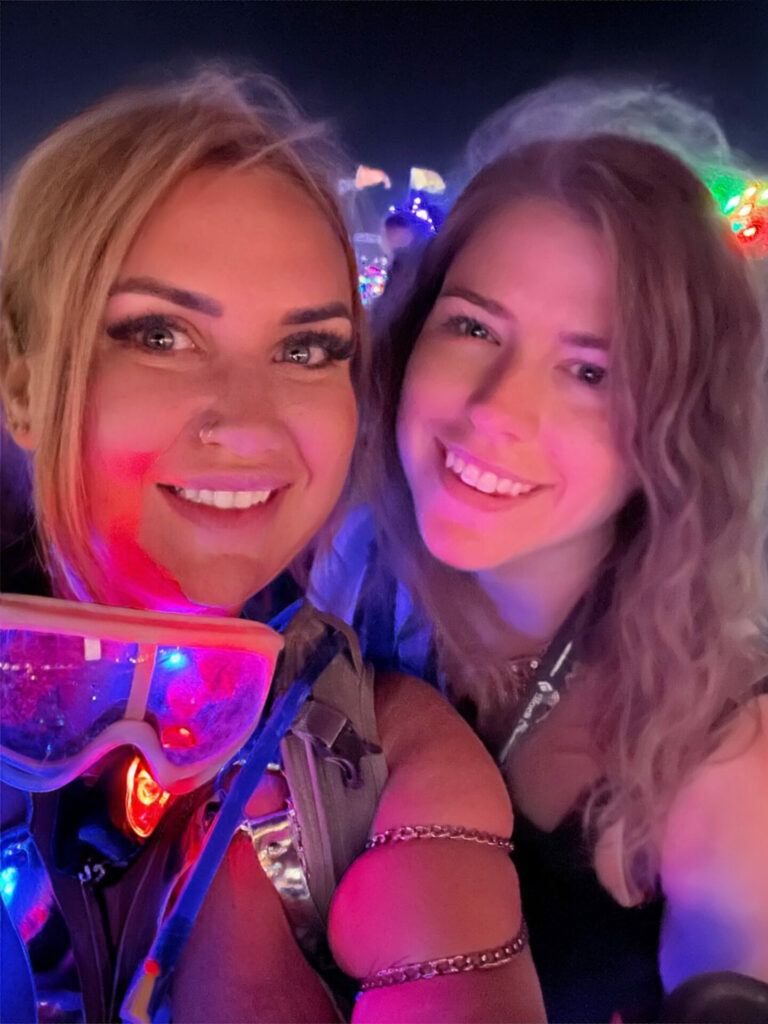
Those unfamiliar with Burning Man may think of it as a hippie-fuelled music festival, but in reality, it’s more like a 10-day-long, counterculture-based improv performance. Attendees construct the temporary Black Rock City on a piece of barren desert in Nevada. In 10 days, 80,000 people build a clock-inspired infrastructure, housing developments, hospitals, bars, restaurants, theatres, concert venues, amusement parks and all the hallmarks of any major metropolitan area.
Burning Man is also the world’s largest open-air art festival with more than 88 official large-scale works and innumerable smaller pieces scattered throughout the city. During the day, attendees ride bicycles around the dust-filled streets participating in interactive experiences curated by each camp — Black Rock City is home to more than 1,500 of these. At night, the neon haze is punctuated by EDM blasting through state-of-the-art speakers installed on “art cars” — vehicles that have been transformed into moving artworks that drive slowly through the playa. After the festival, these creations are burned to the ground and what is left, including the ashes, is carted out of the desert in a 20-hour parade of vehicles known as the exodus.
“Much like a real-life city, Black Rock City also has a gaybourhood with more than 60 LGBTQ+ camps”
The first step in surviving Burning Man is to find a camp. Each one has unique attributes, benefits and gifts for the “Burner” community. Much like a real-life city, Black Rock City also has a gaybourhood with more than 60 LGBTQ+ camps. But in an echo of the default world, there’s only one camp specifically for queer women, Camp Beaverton.
As a young queer person, I fell in love with the LGBTQ+ community headfirst and all at once. I never struggled with knowing my identity or rejected my love of queers in the way many of my elder millennial peers have. It was a mixture of naïveté and bravado that made me parade into my mother’s bedroom on a sunny June morning when I was 11 years old announcing, “I like girls.” In retrospect, I’m not sure what I thought her response would be, but at the time I felt like it was a mere fact rather than a confession.
My love for travel came slower but with more necessity. Everything I know about it I learned from growing up in poverty. When I was eight years old, my mother went bankrupt paying for her cancer treatment. Six months later, my father took the family car and all our savings and left. I imagine taking care of a dying wife and three children was a bit much to handle for a boy in his early twenties. As the dust cleared, my mother found a balance between single motherhood and cancer treatment through church meal programmes and food stamps. We moved from state to state in search of better opportunities.
Every year, we drove thousands of miles to visit family, to escape bad situations, and sometimes because our car was our home. Being poor doesn’t prevent travel; it changes the kind of travel you do and the expectations you have when moving from place to place. I learned at a very young age that being resourceful was the key to getting to where you need to be.
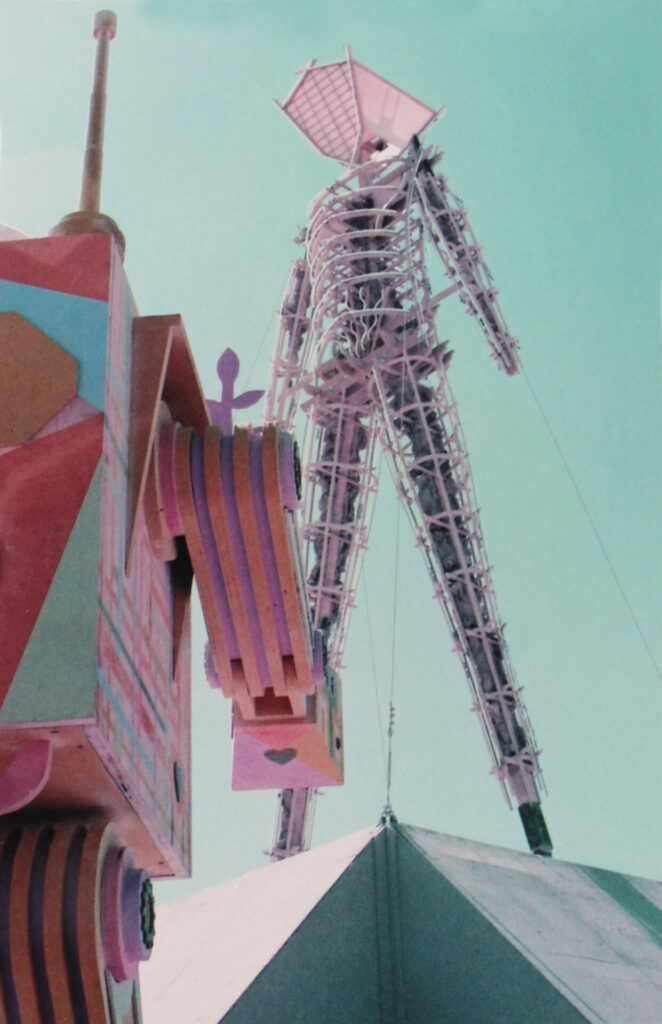
My family allowed me to make independent choices and decisions because they knew I wouldn’t have parents to help me answer the hard questions. As an adult, I became a scrappy and resourceful entrepreneur, doing everything I could in a quest for adventure. With no family, there was no anchor holding me in place.
Rather than finding family in my bloodlines, I found it in queer bars. My home wasn’t built with four walls. It was built in the blue eyes of my basketball-playing best friend. Yhe eyelash glue shared with my femme sisters. The “let me know you got home” texts from the dad of a lesbian in our friendship group.
I found that home with different queer friendship groups all over the world. From being greeted with a pint in Manchester, to dancing to Bad Bunny on a Pride float in Buenos Aires, to cuddling with my fellow Burners while watching the stars just outside Dinah Shore. It took me many years to realise that sometimes anchors aren’t holding you back; they’re providing a steady foundation.
Before arriving in Black Rock City, I was enamoured by the cool factor of the event. I watched hundreds of videos and read even more articles to prepare myself for life in the desert with acidic air, dust storms, no water, and high temperatures of nearly 40 degrees.
It turns out that all of the cool factors I thought existed prior to arrival disappeared immediately upon landing in Black Rock City. As I dragged four duffle bags across miles of dusty playa to find my camp, the reality of survival set in. Burning Man is built on a moral code called The Ten Principles. One of these is radical self-reliance, which I took to mean the inability to ask for help in hauling my bags to camp. Upon arrival, I was greeted with an official welcome to Black Rock City and a chorus of “welcome home” from each passer-by.
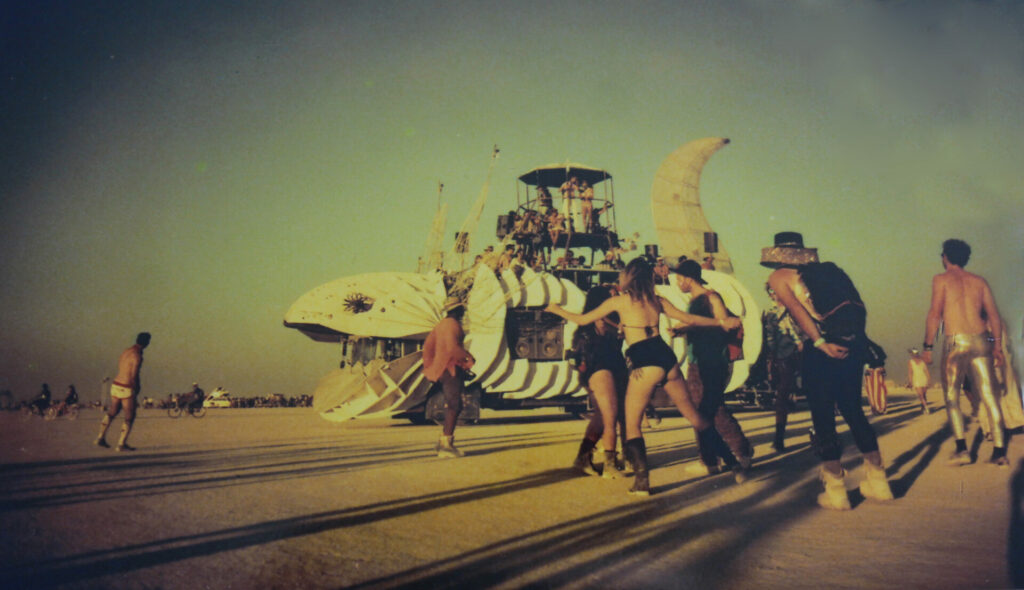
I had wanted to experience Burning Man for a variety of reasons, but now I know that going somewhere new and focusing on something beyond my own narcissism was necessary for my survival. The second I got to camp, I expected everyone to be eager to bond and make friends. I was used to travelling the world with a group of queer influencers who changed locations every few weeks. Being a Burner means aligning with the unique philosophy of the festival. To my dismay, the world of Burners is not necessarily on a parallel with the “look at me” nature of content creators, despite the neon-flashing fashions worn. I quickly learned that at Burning Man we don’t talk about our lives in the default world and that pulling out a phone to take a photo was akin to social suicide.
The people we meet in life have a tremendous impact and influence on our experiences, some for the better and some for the worse. The Burn is a physically, emotionally and psychologically taxing experience, with each individual person on their own journey. However, the first person I met at camp made me want to pack up and leave. My therapist calls this character development but I think of it as mean girl behaviour.
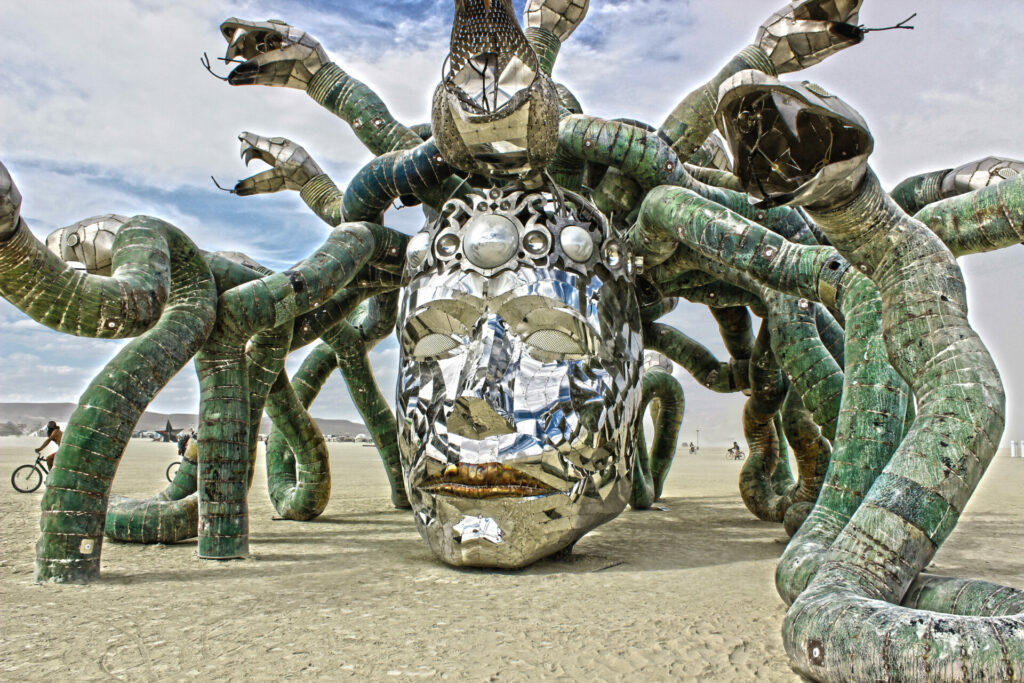
That first interaction painted my first few days of the Burn. I felt unlikable and unwanted around camp and the more disliked I felt, the harder I tried. While trying to find commonality I spent the first few days trying to connect by detailing my adventures around the world, but many of my stories were met with awkward silences. My life outside of the Burn was not social currency.
A lot of people think the best part of my job is travel. It’s not. It’s the experiences I’ve had with people along the way. I fully expected the hardest part of the Burn to be surviving the elements. I assumed testing myself physically would lead to emotional benefits as well. But the biggest challenge was finding my place among a group of nonconformist queers who were nothing like me. I am used to people gravitating towards me in social situations, but here I was wildly outside my comfort zone.
“I slowly made connections based on my true personality rather than a brand I’d curated for the internet”
By day three, I had cried myself to sleep every night and worked myself to the bone each day around camp trying to prove my worth. I wasn’t very useful when it came to most of the maintenance jobs. It became clear that sometimes, even when I do my very best, it just isn’t enough. But that doesn’t make my effort any less meaningful or genuine.
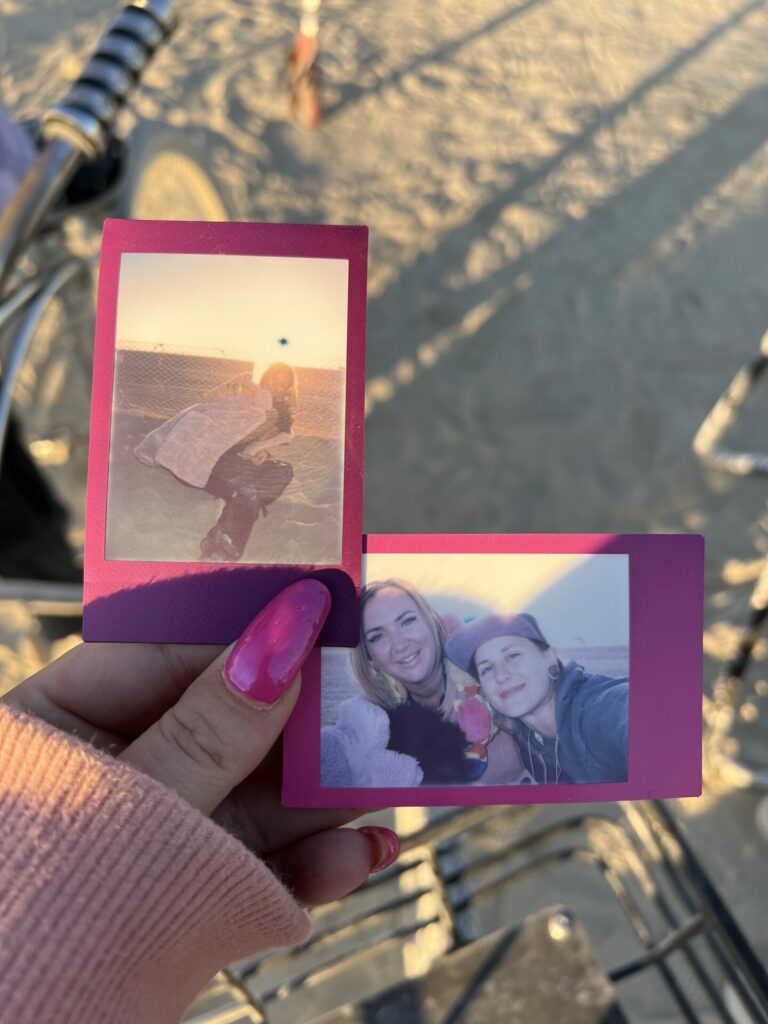
That evening, a group of “Beavers” headed out to the Playa to explore the art cars. Before they left, the camp heartthrob approached me and asked if I’d like to join. If this was a romantic teen romcom, the sky would have opened as the spotlight shone on the stylish, blonde-haired, nonbinary love interest as they swept me off my feet. In reality, they were the awkward but lovable golden retriever who had zero interest in anyone at camp, including myself. Regardless, I practically sprinted back to my tent to get my things before they left.
That night was a highlight of my Burn. We followed an art car blasting music along the playa, stopping at art installations along the way, and enjoying the freedom of the cool night air. We saw fire-spewing mechanical works of wonder. I lost my breath chasing them down as I pedalled my bike as fast as it would go. Together, my new friend and I took side quest after side quest to experience the best of the Playa before winding our way back to our campmates.
I had finally made a genuine connection at Burning Man. That Burner will always hold a special place in my heart. Because they reminded me what it feels like to be invited in and included when you don’t feel like you belong.
Prior to that night, I had decided I wanted to quit playing the game of Burning Man. But when times are tough, giving up isn’t the only option. I realised I didn’t need to try so hard. I could make friends without highlighting my accomplishments or providing tangible value. But most of all I can set down the weight of what I’m carrying and rest for as long as I need.
My remaining time in Black Rock City flew by as I slowly made connections based on my true personality rather than a brand I’d curated for the internet. I let down my guard and allowed myself to participate in the weird and challenging world of the Burn. I worried less about what people would think of me and more about how I could practise the Burning Man principles of immediacy and participation.
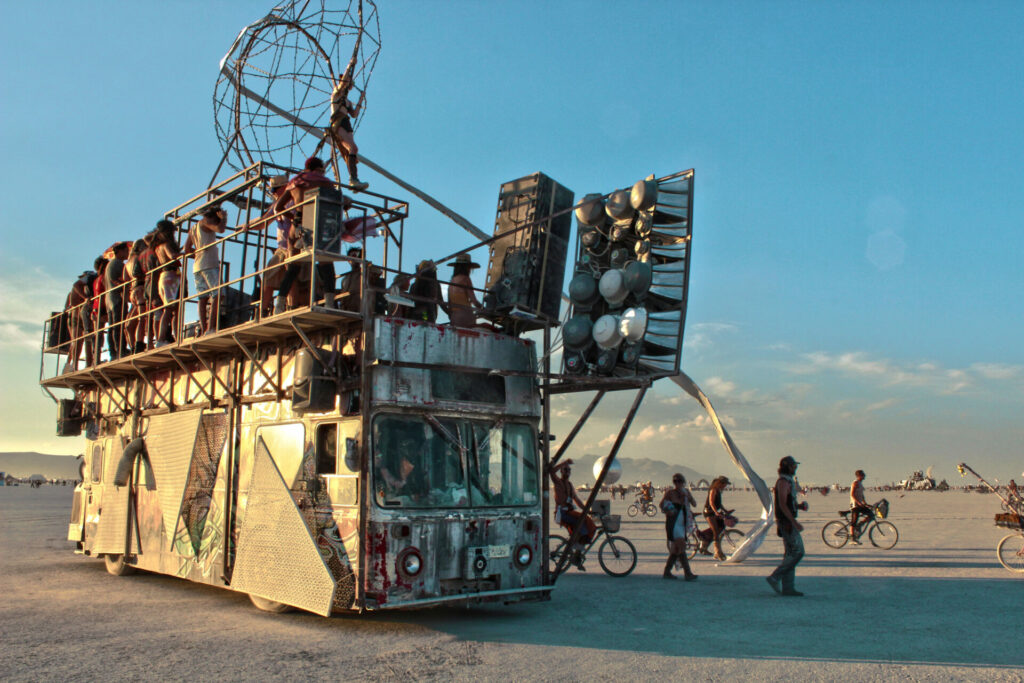
I made up my mind to say yes to every activity I was invited to participate in for the rest of the Burn. This is how I found myself standing naked in a tub while five of my fellow campmates washed my bare skin with squirt bottles and their hands. Beaverton has a one shower per person per Burn policy and my campmates wanted to be as clean as possible before our annual flagship event: The Strap On Athon.
This is the world’s largest queer women’s play party. At first nudge, one may not realise the power an event like this holds. I know I didn’t. Remember my heartthrob friend? They told me beautiful stories of people connecting and exploring versions of themselves at the event. But it wasn’t until I was there myself that I could truly understand what they meant.
While sitting on a dust-covered mattress in a 10ft tent surrounded by naked queers, I made eye contact with two girls sitting alone across the way. I went over and sat beside them, introducing myself as one of the hosts for the evening. They were young, nervous and clearly inexperienced with women.
I sat and talked to them about their identities, desires and what brought them to the Burn. They told me of their fears of coming out, the shame they held in their sexuality, and how they had never had the opportunity to experience a space created for queer women of this calibre. We talked about how so often queer women’s sexuality is commodified for straight men, and how rare it is to find a place just for us. After 20 minutes of conversation, I noticed one of them resting their hand on the other’s leg and politely excused myself, wishing them “welcome home” as I left.
Home is a freedom to explore who we are, how we see ourselves, and our connection to others. Because a home for queers isn’t a place, it’s a community.
Attitude 101, empowered by Bentley – our list of our 101 most influential LGBTQ people – appears in full in issue 351 of Attitude, available to buy and download now
The rest of the Attitude 101 Travel list
Aisha Shaibu-Lenoir, Founder of Moonlight Experiences
Peter Jordan, Founder of Gen C Traveller
Clayton Mercieca, President of Allied Rainbow Communities and coordinator of Malta Pride
Daniel Pasquali, Divisional Director of Leisure Sales for Belmond North America
Damon Dominique, YouTuber, and author
Nick Johnson, Co-founder of Pride @ Virgin Atlantic and senior sales account manager
Jenny Southan, Founder and CEO of Globetrender
Amy Martin-Ziegenfuss, Hilton’s Senior vice president for Global Brand and Enterprise Marketing
Oriol Pamies, Founder of Queer Destinations
Words Meg Ten Eyck Photography Meg Ten Eyck and Tasha Jacobs
